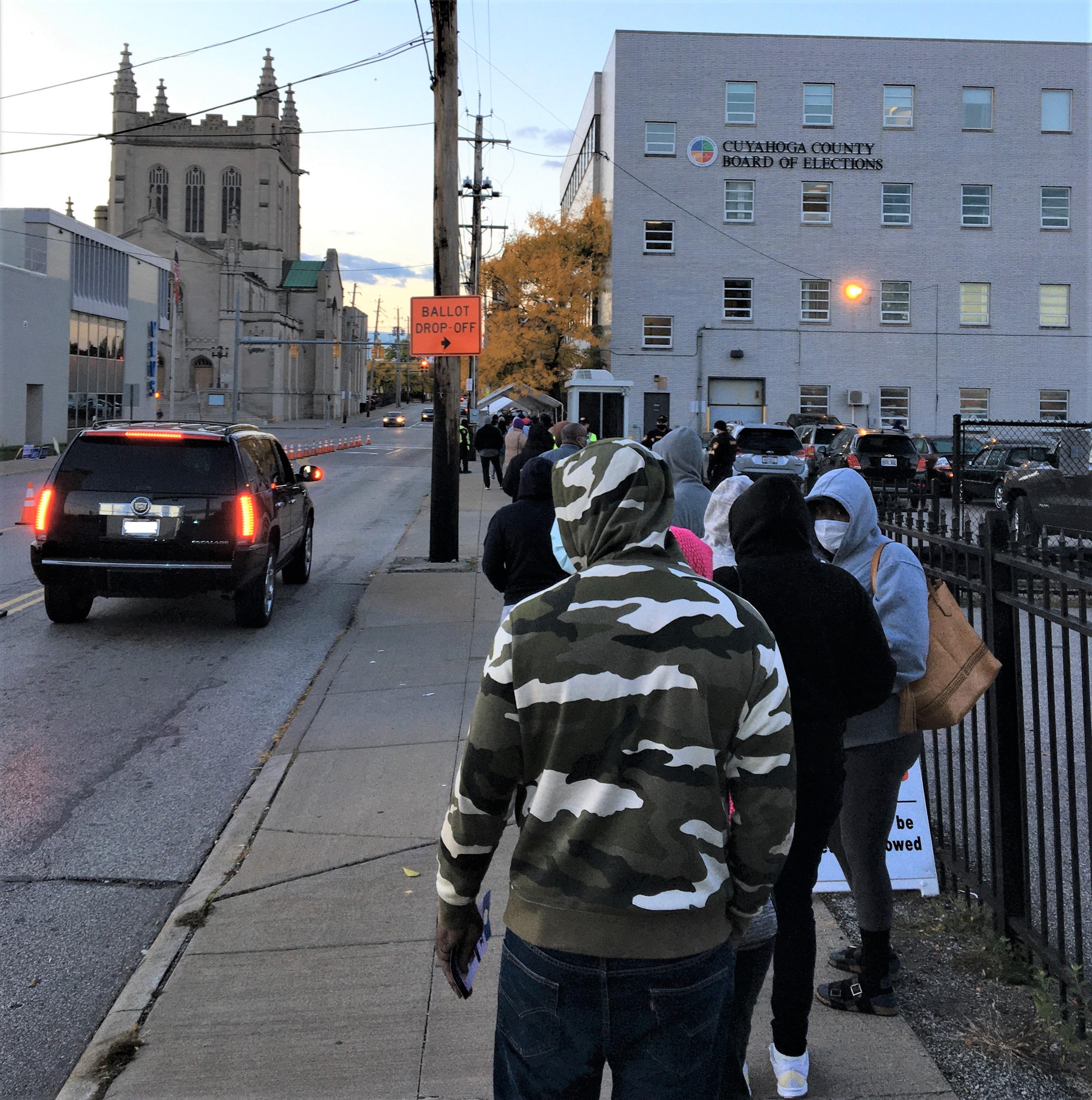
Voters wait in line to cast their ballots at the Cuyahoga County Board of Elections in Cleveland, Ohio, on October 16, 2020. (THD3, CC BY-SA 4.0, via Wikimedia Commons)
For over two hundred years, the battle for the vote has been fought—again and again. The result is a general expansion of legal voting rights through U.S. constitutional amendments and federal laws that have granted voting rights to all men and women with few exceptions.
Before these changes to the Constitution and our laws, voting rights and eligibility were solely defined by each state. Before the Civil War, most states allowed only Caucasian males—who either owned property or had taxable incomes—to vote. And even after Emancipation and the Fourteenth and Fifteenth Amendments had taken the first steps toward atonement for this nation’s original sin of slavery, states continued to suppress the vote through Black Codes, Jim Crow, and other measures designed to disenfranchise African Americans and other minorities.
Prior to the Voting Rights Act (VRA) of 1965, state and local laws could prevent African Americans from exercising their right to vote by establishing discriminatory barriers. The VRA finally banned literacy tests, appointed federal examiners to oversee election procedures, and, according to Section 5, required state and local governments to submit proposed changes in their voting procedures to the U.S. Department of Justice (DOJ) for review and approval before those procedural changes could be enacted into law. Practices opened to this scrutiny included the setting of district lines for representation in national, state, and local governments. This DOJ preclearance became the primary enforcement mechanism designed to protect against discriminatory practices. In 2013, however, the Supreme Court decision in Shelby County v. Holder struck down Section 5.
Since the Court handed down the Shelby decision, many state laws have gone into effect that make it more difficult to vote. Some of these measures include the following:
- Requiring voters to show a government-issued ID to prove their identity
- Reducing early voting, leading to long lines on Election Day
- Requiring proof of citizenship
- Purging voter rolls, thereby delaying the processing of new voter registrations
- Moving polling sites out of some neighborhoods
- Requiring excuses to be presented to secure a vote-by-mail (VBM) ballot
- Reducing the number of VBM drop boxes to one per county, regardless of population
All of these mechanisms are designed to suppress the votes of certain populations and strip them of political power and representation.
A new House resolution, H.R. 1, the For the People Act of 2021, was introduced on January 4 of this year. The purpose of the act is to expand Americans’ access to the ballot box, require a durable paper ballot, reduce the influence of big money in politics, strengthen ethics rules for public servants, and implement other anticorruption measures. Since the introduction of the 2019 For the People Act, the League of Women Voters has been in the forefront of support for the passage of this landmark legislation that will establish equal voting rights across the United States. Its passage will enact regulations that are consistent with several policy positions of the League. It is of critical importance to the advancement of League goals that this legislation pass in order to reverse the impact of renewed voter suppression since the Shelby decision of 2013.
—Martha Y. Zavala